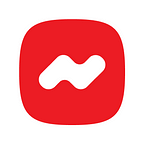How to align good UX concepts with client requirements
User Experience plays a vital role in the success of a product It is an important puzzle that should be solved for the users by the UX designer.
The objective of UX design should be to minimize the complexity and to present the product so that the consumers can make quick decisions. When developing a product to serve their objectives, users’ demands should take precedence over customers’ suggestions since poor user experience can undermine clients’ ultimate goals.
Design adds value faster than it adds cost — Joel Spolsky
Pitching of design concepts to the client
Business goals are the first focus for clients. They approach us to leverage our expertise in the field of user experience and design, for the development of their product. They will already have preconceived notions about how their product should seem or function.
The designer is responsible for analyzing and validating the concepts and objectives that the clients have and providing alternatives that will assist them in accomplishing their business objectives.
Why Guiding Clients through references is important?
Industry Standards of UX/UI guidelines
It is good to follow industry standards and best practices as it helps to keep consistency in functionalities, meets user expectations, reduces the learning curve, and also helps in maintaining consistency in later stages of UI development using various frameworks or libraries such as react js, angular, flutter, vue, bootstrap, etc.
This will also prevent confusion about the names and functionalities of elements. It will also help us convince clients how certain functionalities behave or how a user might use their product.
Usage of Data points to defend your design concepts
Research data points are more helpful in design discussions because it provides you the information and general implication on how the entire scope of the design is perceived from the user’s perspective.
There are two types of data research
- Quantitative Research Data
- Qualitative Research Data
Quantitative research is nothing but the data filled with numbers that deal with it in a statistical format which will help us in solving the design problem whereas qualitative research provides raw facts about the data in form of wordings or verbal data which will help us in understanding human behavior.
Some of the most commonly used quantitative research methods
- Online Survey
- Observation
- Descriptive Research
- correlation Research
Some of the most commonly used qualitative research methods
- User Interview
- Ethnographic Research Modal
- Historical Modal
- Narrative Modal
With the help of these data points, we will have enough information to defend the design concept. This will provide a better understanding for the client with the help of true and unadulterated data about the design.
Real Case Discussion between client and the designer
One of our clients requested that the primary and secondary buttons be the same color so as to limit the use of colors and to give each button a consistent look and feel. However, we were able to persuade the client by
- Explaining a scenario from a users perspective
- Showed various UI guidelines and frameworks such as bootstrap, and material UI kit to help them understand that this is the industry standard
Salient Points
Every time a client proposes a design concept, we as designers need to evaluate it and determine whether it will make the user’s life easier or not. We shouldn’t just accept the client’s recommendation at face value. Therefore, it is crucial to defend what is right and act beneficial for the user by following the set of UX/UI design principles that allow the client to decide on the user’s need.
- By keeping the end user in mind, we assist the customer in achieving his business goal.
- Use a variety of research findings to demonstrate and validate to reach a consensus on various standoff points.
- Inform the client about the industry standards and best practices.
